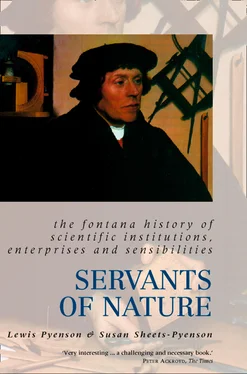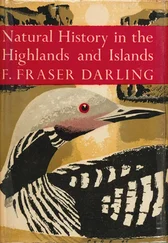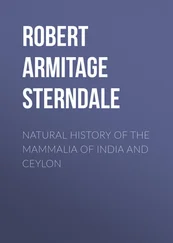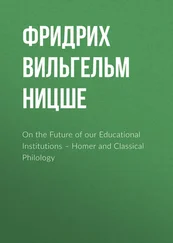Whether on or off a campus, specially designed research laboratories graced universities for the first time during the latter part of the nineteenth century. At the beginning, form was everything – allusions on the building’s portals reminding immature minds about the long tradition of science and the great power it represented. By the last quarter of the century, form was only skin deep. Science laboratories circled around large lecture halls for elementary courses (especially the ones frequented by medical students, who by 1880 were often required to go outside their faculty to learn about physics). Next to the lecture halls was an array of teaching laboratories, special halls for diverse kinds of professorial research (including massive stone plinths set independently of the building’s foundations to provide vibration-free working surfaces), rooms for housing steam and electrical generators, and seminar rooms and libraries. Larger physics institutes like the one at Berlin, inaugurated in 1877 on piers driven into a canal, had apartments for the director (Hermann von Helmholtz [1821–1894]) and his family, the assistants, and the maintenance staff of mechanics and maids. Like the one at Berlin, enormous structures arose at Leipzig and Zurich – veritable kingdoms under the command of a director. European institutes – massive, multistoried structures with several wings – dwarfed older academic buildings. The specialized laboratories eclipsed even the jewel of humanists, the library. Harvard’s Widener Library, the world’s largest university-owned book repository at its dedication in 1915 and an imposing memorial to a young man who went down with the Titanic , was not a great deal bigger than the Berlin physics institute.
By the end of the nineteenth century, nation states were bankrolling prestigious empires of science at independently administered universities (or, in France, at grandes écoles ). Bureaucratic response followed swiftly: the state constructed its own scientific laboratories and funded them even more handsomely. Some scientists abandoned universities for the new settings (Helmholtz’s presidency of the Physikalisch-Technische Reichsanstalt represented the leading edge of the new wave), but most sat on the fence between the traditional prestige (and independence) of a university position and the vast resources (with strings attached) of the new federal research centres. The usual arrangement was to divide time between (and accumulate emoluments from) university and state laboratory. A clever scientist could play off each patron against its competitor. This is what Albert Einstein did when he went to Berlin in 1914. Appointed to a salaried chair at the Academy of Sciences (positions in the same vein had been funded by the academy for many years), he received a courtesy appointment at the local university (allowing him to supervise doctoral students) and a titular directorship of an institute for theoretical physics in the federal laboratory structure known as the Kaiser-Wilhelm Gesellschaft. Einstein used the academy position for publishing rapidly and circulating reprints free of charge; the university post for staying abreast of bright young talent and new scientific ideas; and the Kaiser-Wilhelm post for privileged access to its industrialist, financier, and politician patrons. Certification in research nevertheless remained a university prerogative. German universities continued to award doctorates throughout the twentieth century, and the doctorate became a sine qua non of scientific life elsewhere – even in England, where today a certain prestige still attaches to a scholar who, like Lawrence Stone (b. 1919), Quentin Skinner (b. 1940), or Simon Schama (b. 1945), may not sport an earned doctoral degree.
Universities in the United States grafted the doctorate onto an existing structure, the undergraduate college, whose standards approximated those of a French lycée or German Gymnasium. Seeking the grail of appropriating European wisdom, American professors (complemented by a large number of European imports) taught specialized courses to students registered for an advanced degree. This new structure – departing from the freedom to choose courses which was enjoyed by European students – slowly but inexorably increased the time required for obtaining a doctorate and inflated the length of doctoral dissertations. As higher learning experienced an uneven course in Europe under the excesses of fascism and Stalinism, the modified American model provided a new standard for research training.
From the end of the nineteenth century, foreigners were astounded by the material resources of American universities. The English mathematician James Joseph Sylvester (1814–1897), Swiss naturalist Louis Agassiz (1807–1873), and German biologist Jacques Loeb (1859–1924) held significant university posts in America; by the end of the century, an American lecture tour was obligatory for leading scientific lights, like Englishman Thomas Henry Huxley (1825–1895), German Felix Klein (1849–1925), and Austrian Ludwig Boltzmann (1844–1904, who ironically referred to his tour as a voyage to El Dorado ). Immigrant talent educated in the United States – physicists Albert Abraham Michelson (1852–1931) and Michael Idvorsky Pupin (1858–1935) – rose to the heights of their discipline. But all comers did not stay. Max Abraham (1875–1922) took the measure of a physics chair at Urbana in 1909 and then returned to Europe, where he had no comparable position. Einstein’s first scientific collaborator Jakob Laub (1882–1962) declined to fill Abraham’s Urbana chair, opting instead for one at La Plata in Argentina. Shortly after the turn of the century, Ernest Rutherford would not forsake McGill University in Montreal for Yale (although he did leave when Manchester beckoned). The United States of the 1890s held no permanent attraction for young Bertrand Russell (1872–1970), fresh out of Cambridge and married to an American Quaker. For scientists at the peak of their career in Europe, the preferred arrangement was a visiting lectureship, like those liberally endowed before the First World War. Under this arrangement, physicists Hendrik Antoon Lorentz (1853–1928) and Max Planck taught at Columbia University. After 1918, Einstein was lured to the California Institute of Technology for months at a time. As these examples suggest, by the first decade of the twentieth century, it was normal for German or French professors to take leave from their universities in order to occupy positions abroad, notably in the New World. There were even world-ranging, extramural professorships. In 1914, for example, geophysicist Gustav Angenheister (1878–1945) became a special professor who split his time between Göttingen and the capital of Western Samoa.
Technology has made commuting professors an established feature of academic life. In the 1920s, theoretical physicist Wolfgang Pauli (1900–1958) commuted by train from Göttingen to his lectureship at Hamburg. The possibilities of commuting coincided with the end of the university science institute as a personal empire, presided over by the professor and his wife. The institute or laboratory became a university monument, rather than (as it was during a brief moment, between approximately 1870 and 1910) a living part of a professor’s aura. Only the president’s mansion, often conspicuously located on the campus of a new university, allowed state or private overseers to place an administrator on public display. But because the presidential office served as an obvious focus for student discontent, the mansion sometimes became a white elephant. Today, the president of the University of Southwestern Louisiana lives happily on campus, but the gothic presidential mansion of the University of Tokyo stands vacant – the victim of student protests a generation ago.
Читать дальше












